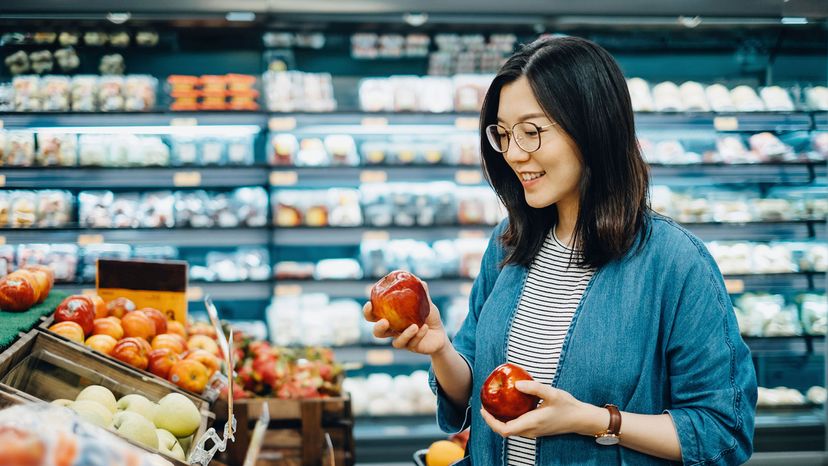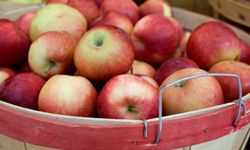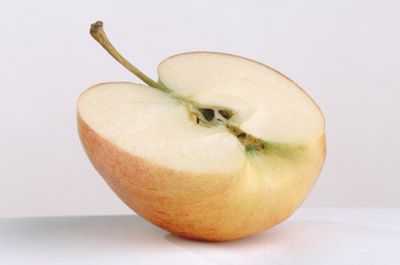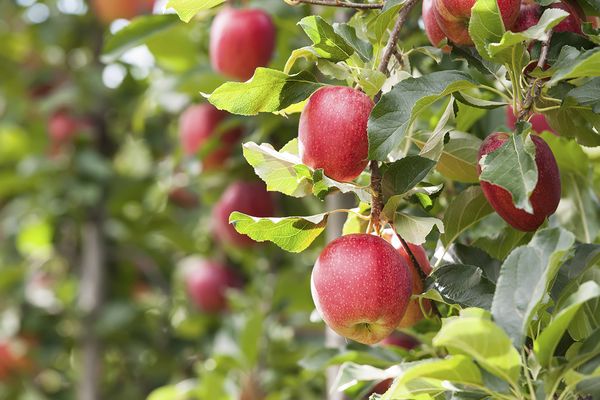Picture yourself walking down the aisle of your local grocery store, strolling past piles upon piles of shiny round apples. How do you know which ones to buy? Start by looking at the surrounding apples.
"Apples are a climacteric fruit, meaning the fruits continue to develop and ripen after they are removed from the tree," says Jessica Cooperstone, a food scientist at The Ohio State University, by email.
Apples and their ilk are highly sensitive to ethylene, the chemical compound that causes fruits to convert starchy cellulose into sugars (otherwise known as ripening). As they ripen, apples release more ethylene, which leads the fruit around them to ripen faster as well. In this way, one bad apple actually can spoil the whole bunch. Other climacteric fruits include bananas and avocados, while non-climacteric fruits include things like strawberries and cherries.
Since ethylene is pretty much a universal chemical signal for "ripe" in climacteric plants, it will even help ripen fruit across species. (You can harness its power for yourself: Try putting a hard avocado in the same bowl as an apple and see how much quicker the avocado ripens.)
Apple-harvesting season is very short (about two months in the fall), so in order to extend their lives after picking, apples are usually treated with a gaseous compound called 1-methylcyclopropene (1-MCP) that blocks ethylene.
That's not all. "By modifying the environment that apples are stored in (mostly by modifying oxygen, carbon dioxide and ethylene and keeping apples cool), certain varieties of apples can be stored up to one year," says Cooperstone. "This is a really impressive feat of post-harvest storage technology, and most of this development happened in the first part of the 20th century."
It's called Controlled Atmosphere storage. When apples are exposed to less oxygen and more carbon dioxide than what's found in the air, they in a sense "go to sleep" and don't finish the ripening process. So, these apples won't spoil. The exact combination of gases and temperature will vary with the type of apple.
Perhaps unsurprisingly, the types of apples that can handle this process — like Fuji, Gala, Granny Smith, Honeycrisp and Red Delicious — are the ones you are most likely to encounter in a mass-market grocery store. But not every apple is equally storeable. Some fragile-skinned types, like Cortland, Jonagold and Crispin, should be eaten soon after they are picked. Otherwise, they might become too soft and mealy for non-cooking applications. Of course, these days science can step in to create new types of more resilient fruit.
"Apple producers are always looking to develop new varieties that keep their fresh characteristics for as long as possible," Cooperstone says. For example, the RubyFrost apple, which was developed by Cornell University especially for wintertime consumption. These hybrids — a cross between Braeburn and Autumn Crisp — are bred to reach peak sweetness in mid to late January, months after they're harvested.
While some new types of apple, like the RubyFrost, are the product of careful selective breeding, others are the result of more direct genetic engineering. Arctic Apples, which are genetically modified to resist browning, became one of the first GMO fruits to be approved by the U.S. Department of Agriculture in 2015.



